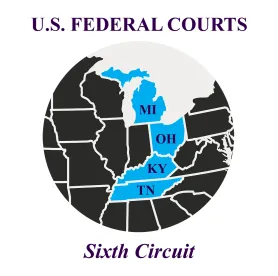A divided panel of the United States Court of Appeals for the Sixth Circuit lifted the stay on the Occupational Safety and Health Association’s Emergency Temporary Standard (“OSHA ETS”) late Friday night (December 17, 2021). The Sixth Circuit had previously been selected at random to hear the consolidated OSHA ETS litigation.
As a result of the Sixth Circuit’s ruling, OSHA announced that it would exercise enforcement discretion with respect to the compliance dates of the OSHA ETS. To provide employers with sufficient time to come into compliance:
-
OSHA will not issue citations for noncompliance with any requirements of the OSHA ETS before January 10, 2022; and
-
OSHA will not issue citations for noncompliance with testing requirements before February 9, 2022.
These “extensions” are conditioned on an employer exercising reasonable, good faith efforts to come into compliance with the OSHA ETS.
Ultimately, the Sixth Circuit found that the petitioners (Republican-led states, businesses, religious groups, and individuals) were unable to establish a likelihood of success on the merits. In doing so, the Sixth Circuit considered and analyzed a myriad of statutory and constitutional arguments. Two out of the three judges on the panel determined that the petitioners would be unlikely to be successful on their constitutional arguments that OSHA violated the commerce clause or the non-delegation doctrine.
Under the Occupational Safety and Health Act, OSHA is required to show that health effects may constitute a “grave danger” in order to warrant an emergency temporary standard. The Sixth Circuit held that the determination as to what constitutes “grave danger” should be left, in the first instance, to the agency. The Sixth Circuit expressly disagreed with, and in effect overruled, the United States Court of Appeals for the Fifth Circuit by holding that OSHA was not required to make findings of exposure in all covered workplaces. The Sixth Circuit held that to require so would mean that no hazard could ever rise to the level of “grave danger.” Ultimately, the Sixth Circuit found that OSHA had shown that COVID-19 is a danger and relied on proper science in issuing the ETS. The Sixth Circuit further held that simply because OSHA did not issue the ETS at the beginning of the pandemic did not mean the agency did not consider COVID-19 an emergency worth addressing.
The Sixth Circuit’s decision was appealed this morning to the Supreme Court; however, this appeal does not alter the decision unless and until the Supreme Court rules. In the meantime, employers should resume (or continue) preparations to comply with the ETS requirements. For a summary of the OSHA ETS and its requirements, visit here.




 />i
/>i

